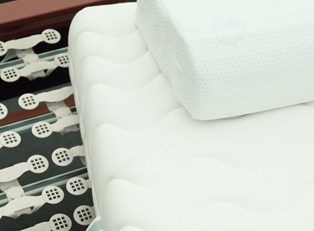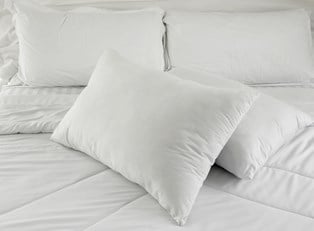Choosing the right mattress is crucial. A good night’s sleep is essential for overall health, and the wrong mattress can exacerbate existing back problems or even create new ones. Given the vast range of mattresses on the market, finding the one that supports your back and provides comfort can feel overwhelming.
Understanding Back Pain and Mattress Support
Back pain is often caused by poor alignment of the spine, either due to underlying conditions like arthritis or simply from long-term poor posture. The right mattress can promote proper spinal alignment, reducing stress on pressure points like the hips, shoulders, and lower back. When your spine is properly supported during sleep, your muscles can relax, and your body can heal from the day’s activities, minimizing the risk of waking up in pain.
The key factor is support. A too-soft mattress can allow your body to sink in too deeply, throwing your spine out of alignment. On the other hand, a mattress that is too firm can create pressure on your joints, causing discomfort in areas like the lower back. The best mattress for back pain is one that offers a balance between support and cushioning, promoting a neutral spine position.
Mattress Types and Their Impact on Back Pain
Different mattress materials can provide varying levels of support and comfort, which is important for back pain sufferers. Understanding the pros and cons of each can help you narrow down your options:
-
Memory Foam: Memory foam mattresses are popular for their contouring properties, which allow them to mold to the shape of your body. This can provide excellent pressure relief for back pain sufferers. However, some memory foam mattresses may lack the firmness needed for proper spinal support, especially if the foam is too soft.
-
Innerspring: Innerspring mattresses feature a coil support system and are often firmer than memory foam options. They provide solid back support, but some may find them less comfortable because they do not contour as much to the body. For back pain sufferers, a hybrid mattress that combines innerspring coils with a memory foam or latex comfort layer may offer the best of both worlds—support and comfort.
-
Latex: Latex mattresses are known for their durability and natural responsiveness. They offer a balance between contouring and support, making them a good option for back pain sufferers. Latex also tends to stay cooler than memory foam, which can be a bonus for those who overheat at night.
-
Hybrid: Hybrid mattresses combine elements of memory foam, latex, and innerspring mattresses. They are designed to offer the pressure relief of foam or latex with the support of innerspring coils. This combination can provide excellent spinal support while also relieving pressure points, making them a great option for those with chronic back pain.
-
Adjustable Beds: An adjustable bed might be the best option for those with severe back pain or other medical conditions. These beds allow you to elevate certain body parts, such as your head or legs, to find the most comfortable sleeping position. Adjustable beds can relieve pressure on the lower back and improve circulation, offering relief from back pain.
How to Choose the Right Mattress for Your Back
Finding the right mattress for your back pain depends on a few key factors, including your preferred sleep position, weight, and specific pain areas.
-
Sleep Position: Your preferred sleep position plays a big role in determining what type of mattress is best for you. If you’re a back sleeper, you’ll need a mattress that supports the natural curve of your spine. Side sleepers may need a softer mattress that cushions the hips and shoulders, while stomach sleepers generally need a firmer mattress to prevent the lower back from sagging.
-
Body Weight: Heavier individuals may need a firmer mattress to provide adequate support and prevent sinking too deeply into the bed. Lighter individuals might prefer a softer mattress that offers more cushioning for pressure points.
-
Pain Location: If your back pain is concentrated in the lower back, a medium-firm mattress may be best for maintaining spinal alignment without creating too much pressure. If your pain is in the upper back or shoulders, a mattress with good contouring can help relieve tension in those areas.
Mattress Longevity and Back Health
Another important factor to consider is the longevity of the mattress. Over time, even the best mattresses wear out and lose their supportive properties. Sleeping on a sagging or worn-out mattress can cause or worsen back pain. It’s generally recommended to replace your mattress every 7–10 years, depending on the material and quality. Investing in a durable, high-quality mattress can make a big difference in your back health over time.
With the right balance of support and comfort, a mattress can help promote proper spinal alignment, relieve pressure points, and improve overall sleep quality. Whether you prefer memory foam, innerspring, or a hybrid design, choosing a mattress that meets your personal needs can help reduce or even eliminate back pain, leading to more restful nights and healthier days.



